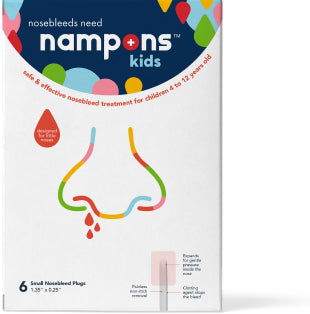Causes & treatment of nosebleeds in children
Nosebleeds in children are extremely common, though often not serious. Roughly 86% of all children under 10 will get a nosebleed, and it's one of the top reasons parents bring their kids into the pediatrician. Knowing the causes, treatment options and how to prevent nosebleeds in kids can save you the visit, and the worry.
-
Causes
Children play, they pick, the bump they fall and they stick things in weird places - that's why they get nosebleeds more than any other group. Also, the inside of the nose, especially as it's still forming in children, is very delicate, with small blood vessels near the surface that can easily rupture and bleed. While nosebleeds are typically not serious, understanding the main causes can help you decide when you need to seek medical assistance. In all cases, if the bleeding lasts more than 15 minutes, please seek medical attention.
-
- Injury from playing or bumping
- A foreign object in the nose (i.e. they put something up there!)
- Excessive or forceful nose picking
- Dry weather causing the blood vessels to burst and bleed
- Allergies that dry the nose and weaken the lining
- Certain medications, such as nose sprays, decongestants and Advil
- An underlying medical problem
Treatment
Many of us grew up using tissues or even actual tampons to stop a nosebleed, however, these methods are both unsanitary and can be quite uncomfortable, especially in children. Some doctors even recommended nasal sprays, like Afrin, on cotton balls. Unfortunately nasal sprays can dry out the nose, leading to more bleeding, and the cotton gets stuck in the nose. Also, kids aren't usually a fan of the stinging sensation from using these products.
For years, pediatricians and ENTs have been using nasal tampons, such as Nampons™, to quickly, cleanly and safely treat nosebleeds. They are small, comfortable and have a hypoallergenic clotting agent that stops the bleeding quickly. Click here for more information about why to use a nasal tampon to treat nosebleeds over tissues and other methods.
Regardless of the treatment, make sure to always lean the child's head forward, not back, to prevent blood from going down the throat and chocking them. The steps below show how to use a nasal tampon to quickly stop the nosebleed.
-
When To See A Doctor
As a parent, we always like to play it safe. Fortunately, nosebleeds, while scary and gross, are typically not serious. There are times, however, when it makes sense to see a medical professional.
Of course, if you have any concerns about your child's health, always contact your primary care or another medical professional.
-
When to Call 911
- If your child has fainted or passed out
- If your child has a life-threatening emergency or injury
When to Talk To Your Doctor
- If the nosebleed lasts more than 15 minutes or won't stop after using Nampons™ for 10 minutes
- If a significant amount of blood is lost from the nosebleed
- If the nosebleeds are happening frequently (a few times a week)
- If your child is high risk (bleeding disorder, etc) and gets a nosebleed




